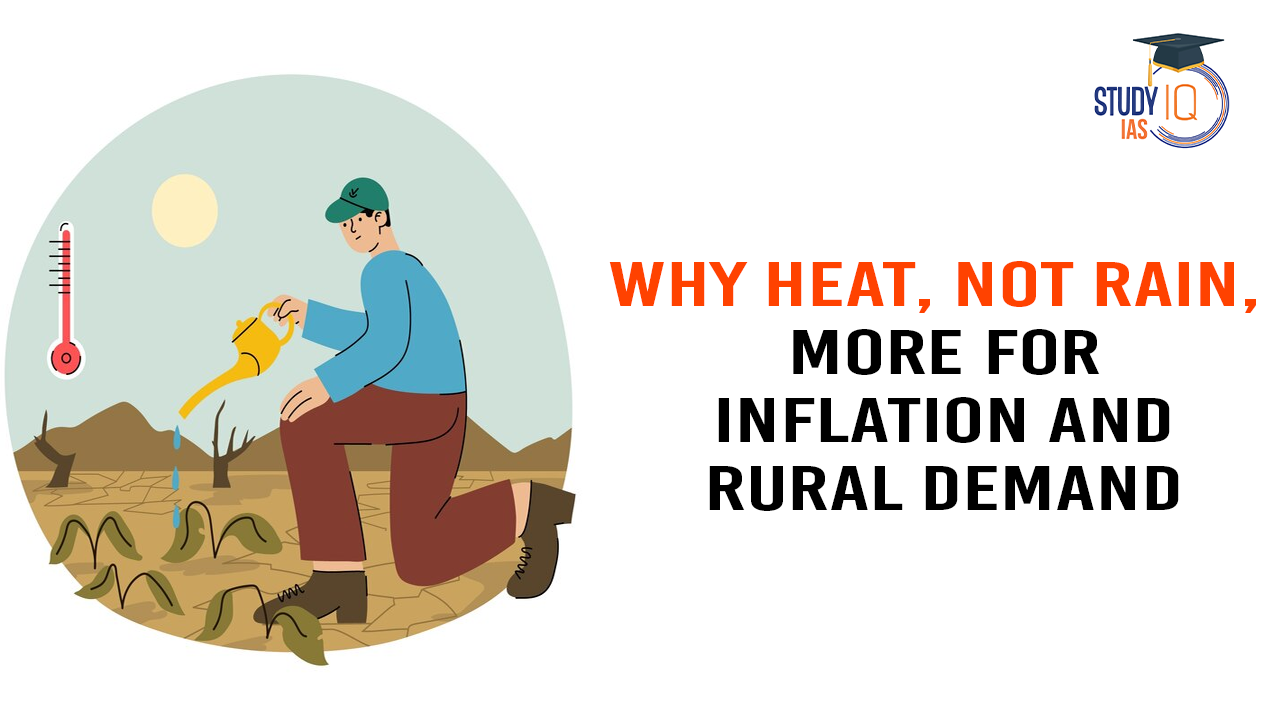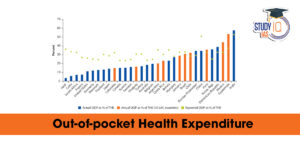Table of Contents
Context: Temperatures, more than rainfall or reservoir levels, have become the dominant factor in predicting food production and inflation in India.
More in News
- Rising average temperatures and increasing volatility are strongly correlated with declining crop yields and rising food prices.
- This suggests that the country’s agricultural output is highly sensitive to heat stress.
Trends of Temperature Rise and Crop Yields
- Temperature Rise:
- Data since the 1950s shows average temperatures have steadily increased.
- The correlation between temperatures and food inflation has grown over time.
- Impact on Crop Yields:
- A projected temperature increase of 2.5-4.9°C could reduce wheat yields by 41-52% and rice yields by 32-40%.
- Specific examples:
- March 2022 Heatwave: Reduced sugarcane yield by 30%, affected vegetables and oilseeds.
- March 2024 Heatwave: Reached temperatures of 50.5°C, causing a spike in vegetable prices due to crop damage.
Crop Sensitivity to Heat
- Perishable Crops (vegetables and fruits): Short-cycle crops, highly sensitive to temperature fluctuations.
- Over the past decade, the correlation between temperatures and perishable crop prices has risen from 20% to 60%.
- Durable Crops (cereals, pulses, oilseeds, sugar): Traditionally less sensitive to heat, but this is changing.
- The correlation between temperatures and durable crops has risen from 10% to 45% in the last decade.
- Animal Products (dairy, poultry, fish): Rising temperatures have increased animal mortality, impacting prices of animal proteins.
Comparison with Rainfall and Reservoir Levels
- Better Irrigation Mitigates Low Rains: Irrigation improvements, especially in North-West India, have lessened the impact of low rainfall on agriculture.
- Temperature vs. Reservoir Levels: Temperatures correlate with reservoir levels (~50%), meaning much of the relevant information about water availability is already embedded in temperature data.
Model Findings
- Food Inflation Model: Incorporating temperature into food inflation models improves forecasting accuracy. This raises the robust model (R-squared) from 80% to 90%.
- Temperatures are better predictors of food inflation than rainfall and reservoir levels.
- Supply-Side Management: Government actions (e.g., managing granary stocks, quick transport, clamping down on hoarders) have played a role in controlling inflation over the past decade.
Outlook for Food Inflation
- La Niña Effect (2024): The shift from El Niño to La Niña has brought cooler temperatures and increased precipitation.
- This is expected to lower food inflation and bring overall inflation closer to the RBI’s 4% target by March 2025.
- Long-term Challenge: While improved irrigation can mitigate weak rainfall, there is no quick solution to the impact of rising temperatures on agriculture and inflation management.


 SEBI’s SWAGAT-FI Framework for Low-Ris...
SEBI’s SWAGAT-FI Framework for Low-Ris...
 Out-of-Pocket Health Expenditure, Reason...
Out-of-Pocket Health Expenditure, Reason...
 Treasury Bills (T-bills): RBI Cuts Holdi...
Treasury Bills (T-bills): RBI Cuts Holdi...

























